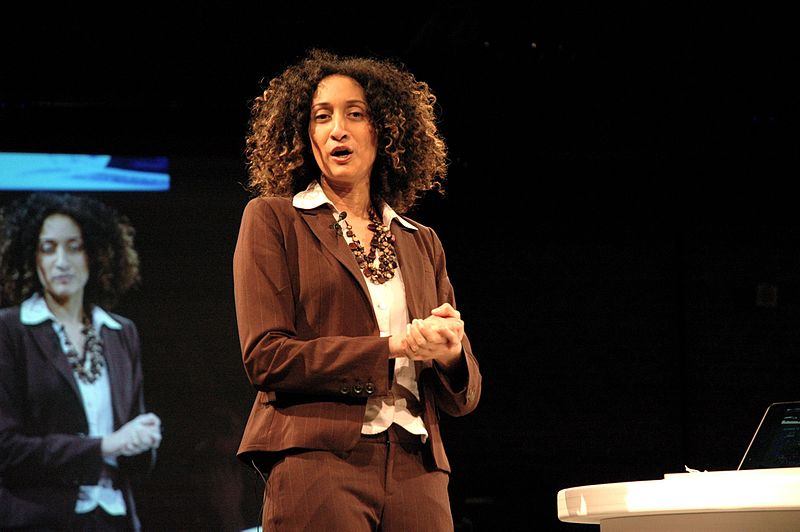Just before Christmas, on 12 December 2023, Hackney council announced that it will be closing four primary schools in September. In Camden, four primary schools have closed since 2019; and Southwark - which has already lost several schools - warned that a further 16 are at risk of closure. The immediate cause: as London becomes increasingly unaffordable for young families, the number of new students of primary school age continues to decline. The closure of struggling schools is only set accelerate the process, undermining local secondary schools and pushing families out further.
It’s “worrying and frightening for children to have to find a new school,” says primary teacher and Lambeth NEU district secretary Sara Tomlinson. “Concerns around inter-school rivalry, how their child will get to their new school, whether their syllabus will continue, whether they’ll make new friends and whether their education will suffer - these are huge worries for families.”
And while demand for reception places began to plateau in 2017, according to London Councils, it has dropped steadily across most areas of London over the last few years and is predicted to decrease by 7.3% from 2022-23 to 2026-27. Lambeth has been particularly affected by migration - 6,000 more people left than moved into the borough during 2019/20. Two schools closed during 2023 and it has been estimated that the borough will need at least 575 fewer primary school places by 2025/26.
But Tomlinson, alongside others such as headteachers and councillors, is part of the Pupil Place Planning Advisory group, which is working to ensure that no more schools are forced to close. In part, she says, because Lambeth has been here before. “In the nineties, the borough closed about seven schools,” she says. “Beautiful Victorian buildings that became loft apartments. Then, about four years later, there was an upswing in the birth rate, a shortage of places and a scramble to build new schools.”
There is a determination to do things differently this time, she says, primarily through asking schools to work together and - in the first instance - reduce their pupil admission numbers to ensure a more equitable spread of people.
“Lambeth has a lot of buy-in from lots of different bodies,” says Tomlinson. “But the education system is completely fractured.”Local authorities have no oversight of academies, church schools or free schools - “a disastrous policy from this government” - which has resulted in a business-like set-up where schools can be built directly next to each other and simply compete for numbers. “I've seen this happen across boroughs and it creates a huge amount of worry about schools, about jobs and about communities,” Tomlinson adds.
Because schools are more than “numbers on paper that you can shift from one place to another,” says Tomlinson. They’re community hubs. “At my school… we did a lot of work getting people to come in and get to know each other, we picked up isolated families, families that don't speak the same language, we ran language courses.” So, when you take them away, you take the networks, the employment - the life - that came with it.
Market forces run amok
To save schools in the here and now, says Tomlinson, we need a government that truly values - and funds - the education sector, as it did when she became a teacher in 2000. “We had fantastic training, consultants who oversaw the underachievement of children of different backgrounds, investment in special needs and EAL [English as an additional language]… You just felt part of a borough that was working together,” she says. But cuts to local government and education has meant “we're down to the bare bones, where you have a teacher in front of a class and you might have a support assistant but the extras are just not there, and that has been a disaster.
Investment in education peaked in 2010, at 5.4% GDP, but declined to below 3.9% in 2018-19: the lowest in almost 20 years. The government has since increased funding, but analysis by the Institute of Fiscal Studies predicts that, with school-specific costs rising higher than general inflation, purchasing power of English schools in 2024 will still be 3% lower than in 2010. And as schools receive funding per pupil, small schools and those with dwindling numbers are quickly facing difficulties.
This structure alone needs to change, says Tomlinson, replaced by “a base level of funding, which ensures that if you have a few dips [in pupil numbers] you can still provide a great service.” And of course, London needs to become a place where families - and teaching staff - can afford to live. For while factors such as Brexit have contributed to migration patterns in the capital, there is no doubt that the key driver of falling pupil numbers is the unaffordability of London.
Take Camden, for instance, where house prices average at £2.4m, while rent accounts for 57% of people’s wages - the highest in London. Or Hackney and Southwark, where 24 in every 1,000 people live in temporary accommodation (against an average of 16) and the average rent is £1,850 per month. As a result, families are being forced to live elsewhere,or choosing not to have kids at all, with the BBC revealing that birth rates in the capital have fallen 17% in nine years.
“The decision by Margaret Thatcher to sell off the council housing was a watershed moment,” says Laurence Guinness, chief executive of London child poverty charity, The Childhood Trust. “It was the beginning of the end for working-class families to be able to make London a sustainable place to raise their children.” And if the pandemic worked as a “polarising filter”, illustrating the gap between the have and have-nots, he adds, the cost-of-living crisis has served “to further widen that gulf.”
According to Trust for London, people who count as living in poverty in the capital most frequently come from working households (910,000, compared with 370,000 who come from ‘working-age workless households’). But employment is no longer enough. “We now see working families having to rely on charitable support so that they don't starve,” says Guinness. And even for those that don’t live in poverty, but are on average incomes in sectors such as public services; retail; hospitality; managerial capacities; care and indeed education - raising a family in London is no longer an option.
“All of these people have to live somewhere and they have the right to have children, but we just don’t value them,” says Guinness. “They’re treated as another element of the market: ’If you haven't trained to become a consultant and you’re just a porter, that’s your own fault.’ It's every person for themselves now and I think that's why we are seeing such poverty.” Six and a half million people now live in poverty in the UK, according to The Childhood Trust - an increase of 1.5m over 20 years.
As a result, Guinness says, his charity works with families forced to move out of the city “all of the time.” Some go to great lengths to hold onto the networks they have here, he says, referencing one family who commutes from Kent to Southwark every day so their daughter can finish her last year at primary school. Others have no choice but to leave everything behind, such as one working family who were moved from London to Grimsby. Shortly afterwards, their daughter was diagnosed with leukaemia, a trauma compounded by being “disconnected from everyone they knew,” says Guinness. The mother described the experience as “inhumane.”
The doughnut effect
This “hollowing out” effect, where residents on lower- and middle-income wages are pushed to the edges, to be replaced by wealthy families; working professionals and tourists is not only deeply unfair, but is “very problematic” for a city, says Dr Phillipp Rode, executive director of LSE Cities. An area becomes homogenised, with the energy and often the young life sucked away, “which is then compounded when [property is dominated] by people who often don't live there the whole year round.” The biggest concern however, says Rode, is the increased risk of “ghettoising” the city, via the extreme separation of rich and poor.
In Camden, the gulf between residents is already stark: the poverty rate is 41% (London average is 25%), yet just under 40% of its teenagers attend private schools. And even in areas like Swiss Cottage, adds Guinness, “many of the children go to independent schools outside of London and just come home at weekends or holidays… so the children who live in social housing have nothing to do after school or during the holidays.” Already, the city is no longer made for them.
“Talk to developers, to government ministers, to finance companies - whoever you speak to, everyone agrees that the housing market is broken,” says Guinness, “but nobody has any sensible plan to change anything, as far as I can see.” Rode adds that if there is any hope of moving forward, there has to be a degree of honesty. “The affordability point is a conundrum that, in the UK in particular, isn't talked enough about,” he says. Because “another term for ‘a more affordable city’ is ‘falling house prices’… and in this country, you are not going to get elected if you say ‘I stand for falling house prices’.”
With an absence of genuine desire to bring prices down, says Rode, investment into social housing “has to be part of the answer,” pointing to Singapore and Vienna as two cities that have “cracked the housing affordability issue” this way (in the latter, more than 60% of residents live in subsidised housing).
Guinness agrees that good-quality social housing is key to regenerating London - “if you build dozens of tower blocks, you create more social problems than you solve” - and holds some optimism that change may be afoot. “We’re reaching a point where there is an opportunity to change government, and for that government to do things differently,” says Guinness. “We’ve seen the consequences of policies that have made many things worse; that can now be countered by an equitable set of policy constructs that will work to address these issues.”





